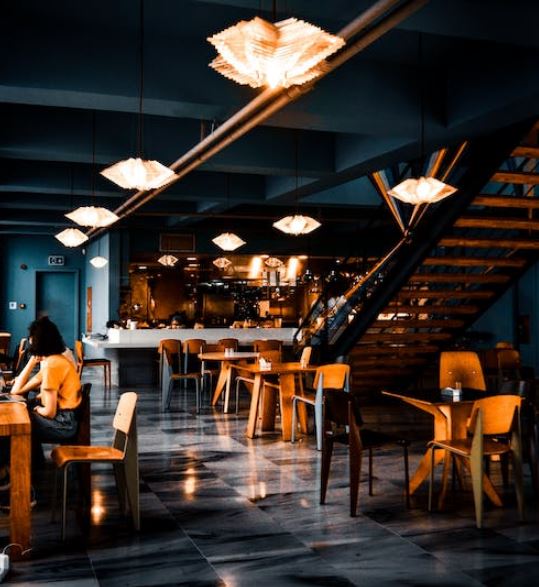When you step into a restaurant, what’s the first thing that catches your eye? Chances are, it’s the furniture. The arrangement of tables and chairs, the choice of materials, and the overall design play a pivotal role in creating an inviting and comfortable ambiance. For restaurants aiming to be party-ready, this balance between aesthetics and functionality becomes even more crucial.
The Role of Furniture in Restaurant Ambiance
Restaurant ambiance is more than just decor; it’s the soul of the establishment. Furniture serves as a cornerstone of this ambiance, influencing the overall dining experience. Picture yourself in two different settings: a cozy, rustic bistro with wooden tables and plush armchairs, and a sleek, modern lounge with high tables and barstools. Each furniture choice sets a distinct tone and expectation.
Different restaurant styles require specific furniture arrangements. A fine-dining establishment may favor intimate table settings, while a sports bar thrives on communal seating for game-day gatherings. The right restaurant furniture not only complements the restaurant’s theme but also ensures that guests are comfortable throughout their visit.
Aesthetics vs. Functionality: Finding the Sweet Spot
Attracting patrons is essential, and aesthetics often serve as the initial attraction. The choice of furniture can either draw customers in or send them walking. Here’s where the challenge lies: while visually appealing furniture is essential, it must also prioritize functionality.
Selecting furniture that aligns with your restaurant’s theme is key. For instance, a beachfront cafe might opt for light, airy materials like rattan or bamboo to convey a tropical vibe. Color and material selection should harmonize with the broader decor, creating a cohesive look.
However, aesthetics must be balanced with functionality. Think ergonomic considerations: chairs should be comfortable for extended seating, and table heights should accommodate various dining scenarios. Strike the right balance between aesthetics and functionality, ensuring that patrons not only admire the furniture but also find it comfortable.
Customization and Personalization
One approach to achieving the perfect blend of aesthetics and functionality is customization. Tailoring furniture to your restaurant’s unique identity can set you apart from the competition. Collaborating with designers and manufacturers can lead to personalized pieces that reflect your brand’s character.
Incorporating branding elements into your furniture design can foster a sense of loyalty and recognition among your customers. Imagine a coffee shop with tables engraved with its logo, or a brewery with barstools featuring its signature beer labels. These personalized touches create a memorable and immersive experience.
Durability and Maintenance
Restaurant furniture faces a continuous onslaught of wear and tear, especially in a party-ready environment. To ensure longevity, select materials that can withstand the demands of your clientele. Wood, metal, plastic, and upholstery each have their merits, but their suitability depends on your restaurant’s needs.
For outdoor seating, weather-resistant materials are essential. You don’t want your patio furniture to deteriorate after a single season. Regular maintenance routines, such as cleaning and care, are necessary to extend the lifespan of your furniture. Additionally, consider repair and refurbishment options to address wear and tear promptly.
Flexibility in Furniture Arrangement
Flexibility in furniture arrangement is vital, especially for accommodating different party sizes and event setups. Think about modular and multifunctional furniture options that can be easily rearranged to suit changing needs. Mobile furniture, like rolling tables and stackable chairs, maximizes space utilization during events.
Whether you’re hosting a small birthday celebration or a bustling New Year’s Eve bash, adaptable furniture layouts can help you make the most of your restaurant’s space and cater to a diverse range of party sizes and preferences.
Sustainability in Restaurant Furniture
In an era of growing environmental awareness, sustainable furniture choices are gaining prominence. Many customers are seeking eco-friendly dining experiences, making it essential for restaurants to consider their environmental impact.
Opting for sustainable materials and manufacturing practices not only reduces your restaurant’s carbon footprint but also appeals to eco-conscious customers. Explore options like reclaimed wood, recycled metal, or furniture made from renewable resources to align with sustainable dining trends.
Budget Considerations
Finding the right commercial-grade restaurant furniture that balances aesthetics and functionality doesn’t mean breaking the bank. It’s possible to discover cost-effective solutions that meet your restaurant’s needs without compromising quality and style.
When allocating your budget, prioritize key areas such as seating capacity, comfort, and durability. Look for reputable suppliers who offer competitive pricing without sacrificing on design or materials.
Harmonizing Aesthetics and Functionality: Crafting the Perfect Dining Experience
In the world of restaurant management, creating a party-ready atmosphere is a multifaceted challenge. Furniture plays a pivotal role in striking the balance between aesthetics and functionality. From the initial visual allure to the comfort of the seating, every aspect of restaurant furniture contributes to the overall guest experience.
Customization and sustainability can set your restaurant apart, while flexibility and durability ensure that your furniture remains party-ready year after year. And, of course, staying within budget is essential for the long-term success of your establishment.
In the end, the art of achieving the perfect restaurant furniture balance lies in harmonizing aesthetics and functionality to create an unforgettable dining experience that keeps your guests coming back for more.

